Gallery
- Cabinet Seal
The national seals of Japan comprise the following emblems used for the purpose of authentication by the Emperor and government of Japan:

The prime minister of Japan is the head of government of Japan. The prime minister chairs the Cabinet of Japan and has the ability to select and dismiss its ministers of state. The prime minister also serves as the commander-in-chief of the Japan Self Defence Forces and is a sitting member of either house of the National Diet.
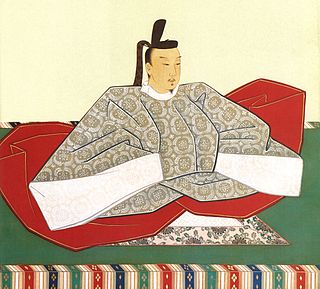
Emperor Go-Komatsu was the 100th emperor of Japan, according to the traditional order of succession, and the sixth and final Emperor of the Northern Court.

Chrysanthemums, sometimes called mums or chrysanths, are flowering plants of the genus Chrysanthemum in the family Asteraceae. They are native to East Asia and northeastern Europe. Most species originate from East Asia, and the center of diversity is in China. Countless horticultural varieties and cultivars exist.

The Chrysanthemum Throne is the throne of the Emperor of Japan. The term also can refer to very specific seating, such as the Takamikura (高御座) throne in the Shishin-den at Kyoto Imperial Palace.

The Imperial Seal of Japan or National Seal of Japan, also called the Chrysanthemum Seal, Chrysanthemum Flower Seal or Imperial chrysanthemum emblem, is the mon used by the Emperor of Japan and members of the Imperial Family.
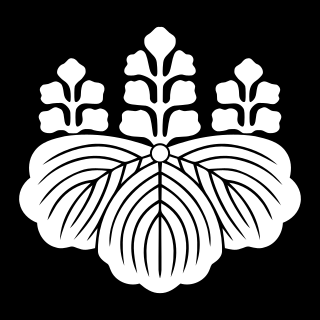
Mon (紋), also called monshō (紋章), mondokoro (紋所), and kamon (家紋), are Japanese emblems used to decorate and identify an individual, a family, or an institution, municipality or business entity. While mon is an encompassing term that may refer to any such device, kamon and mondokoro refer specifically to emblems that are used to identify a family. An authoritative mon reference compiles Japan's 241 general categories of mon based on structural resemblance, with 5,116 distinct individual mon. However, it is well acknowledged that there are a number of lost or obscure mon. Among mon, the mon officially used by the family is called jōmon (定紋). Over time, new mon have been created, such as kaemon (替紋), which is unofficially created by an individual, and onnamon (女紋), which is created by a woman after marriage by modifying part of her original family's mon, so that by 2023 there will be a total of 20,000 to 25,000 mon.
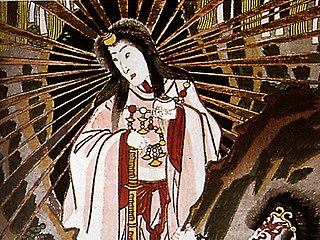
The Three Sacred Treasures are the imperial regalia of Japan and consist of the sword Kusanagi no Tsurugi (草薙劍), the mirror Yata no Kagami (八咫鏡), and the jewel Yasakani no Magatama (八尺瓊勾玉). They represent the three primary virtues: valour, wisdom, and benevolence. The actual historical status of these legendary treasures is unknown as they are intentionally kept from public view to symbolize authority.
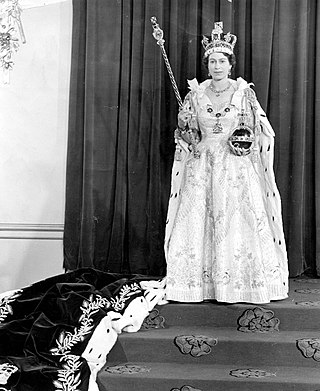
Regalia is the set of emblems, symbols, or paraphernalia indicative of royal status, as well as rights, prerogatives and privileges enjoyed by a sovereign, regardless of title. The word originally referred to the elaborate formal dress and accessories of a sovereign, but now it also refers to any type of elaborate formal dress. The word stems from the Latin substantivation of the adjective regalis, "regal", itself from rex, "king". It is sometimes used in the singular, regale.

In the Sinosphere, seals (stamps) can be applied on objects to establish personal identification. They are commonly applied on items such as personal documents, office paperwork, contracts, and art. They are used similarly to signatures in the West. Unlike in the West, where wax seals are common, Sinosphere seals are used with ink.

The Privy Council of Japan was an advisory council to the Emperor of Japan that operated from 1888 to 1947. It was largely used to limit the power of the Imperial Diet.
The Lord Keeper of the Privy Seal of Japan was an administrative post not of Cabinet rank in the government of the Empire of Japan, responsible for being a direct, personal advisor to the emperor, and keeping the Privy Seal of Japan and State Seal of Japan among other things.
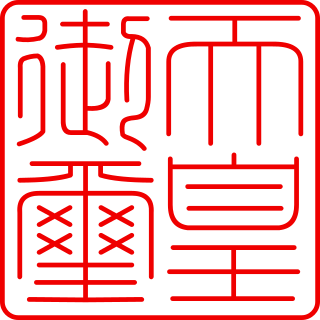
The Privy Seal of Japan is one of the national seals and is the Emperor of Japan's official seal.

The Great Seal of Japan is one of the national seals of Japan and is used as the official seal of state.

Baron Ichiki Kitokurō was a Japanese statesman. He served as Minister of Education (1914), Home Minister (1915), Imperial Household Minister (1925), and President of the Privy Council (1934–1936).
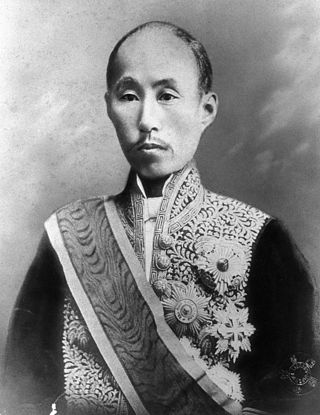
Prince Sanjō Sanetomi was a Japanese Imperial court noble and statesman at the time of the Meiji Restoration. He held many high-ranking offices in the Meiji government.
The chrysanthemum taboo is the Japanese social taboo against discussion or criticism of the Emperor of Japan and his family, especially Emperor Hirohito (1901–1989). The taboo also extended to discussion of the Emperor's declining health.

The Nissan Prince Royal is a large Japanese limousine made for the Imperial Household of Japan.

The Government Seal of Japan, one of the country's national seals, is the emblem (mon) of paulownia used by the Prime Minister, the Cabinet and the executive branch of the Government of Japan on official documents. It is generally known as the 5-7 Paulownia, which has been used by those in power and is the official emblem of the Japanese government today. It resembles a stylized paulownia with 5-7-5 flowers. It is one of various paulownia mon, collectively known as the Paulownia Seals or the Paulownia Flower Seals.

The Japanese honours system is a system implemented for rewarding awards to Japanese and non-Japanese persons for their achievements and service to Japan. The Emperor is the head of the honors system in Japan.

The 2019 Japanese imperial transition occurred on 30 April 2019 when the then 85-year-old Emperor Akihito of Japan abdicated from the Chrysanthemum Throne after reigning for 30 years, becoming the first Emperor of Japan to do so since Emperor Kōkaku in 1817. This marked the end of the Heisei era and the inception of the Reiwa era, and saw numerous festivities leading up to the accession of his eldest son and successor, Emperor Naruhito. The Enthronement Ceremony took place on 22 October 2019. Akihito's younger son, Prince Akishino, is his brother's heir presumptive. The ceremony cost 16.6 billion Yen.